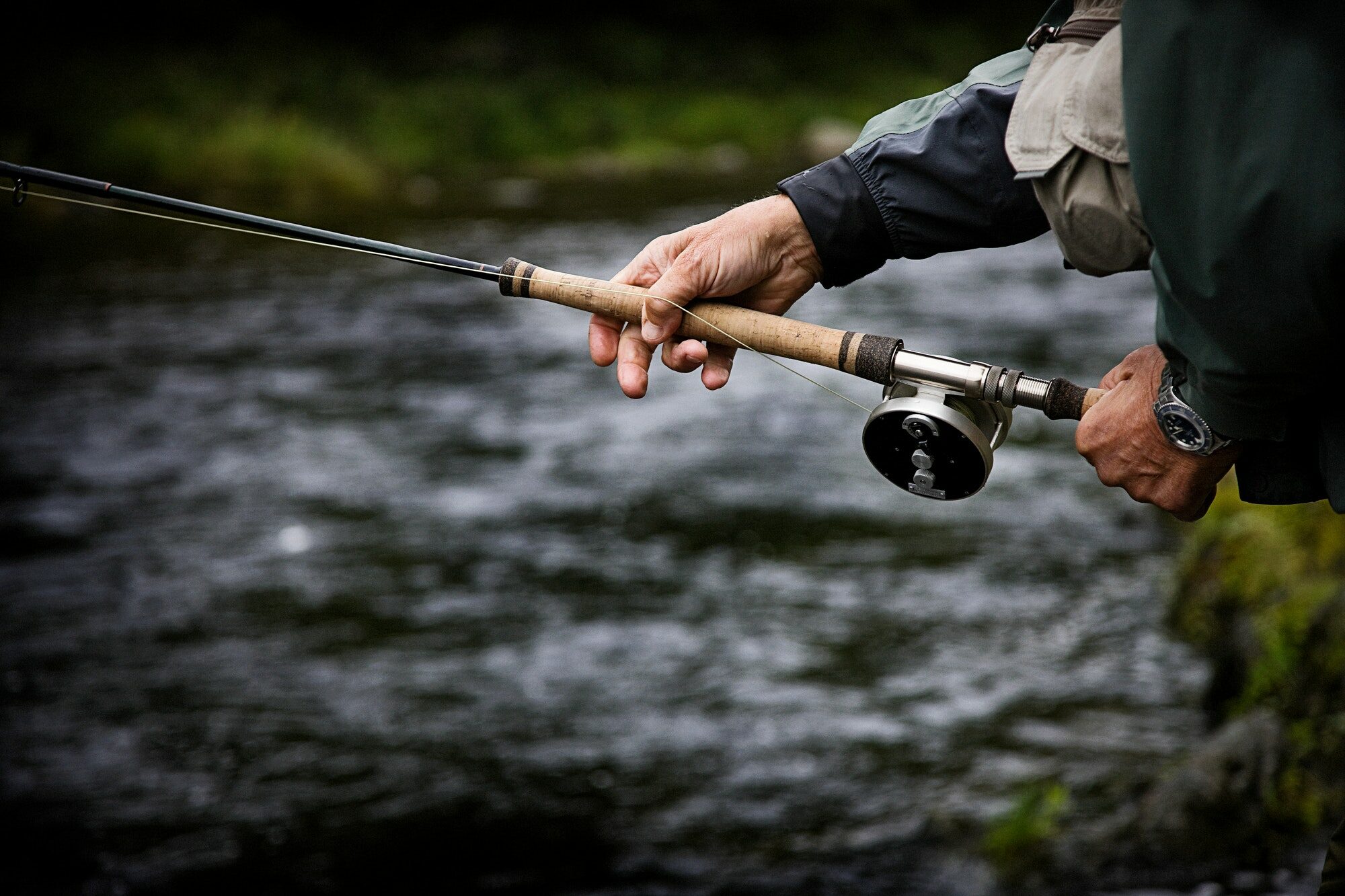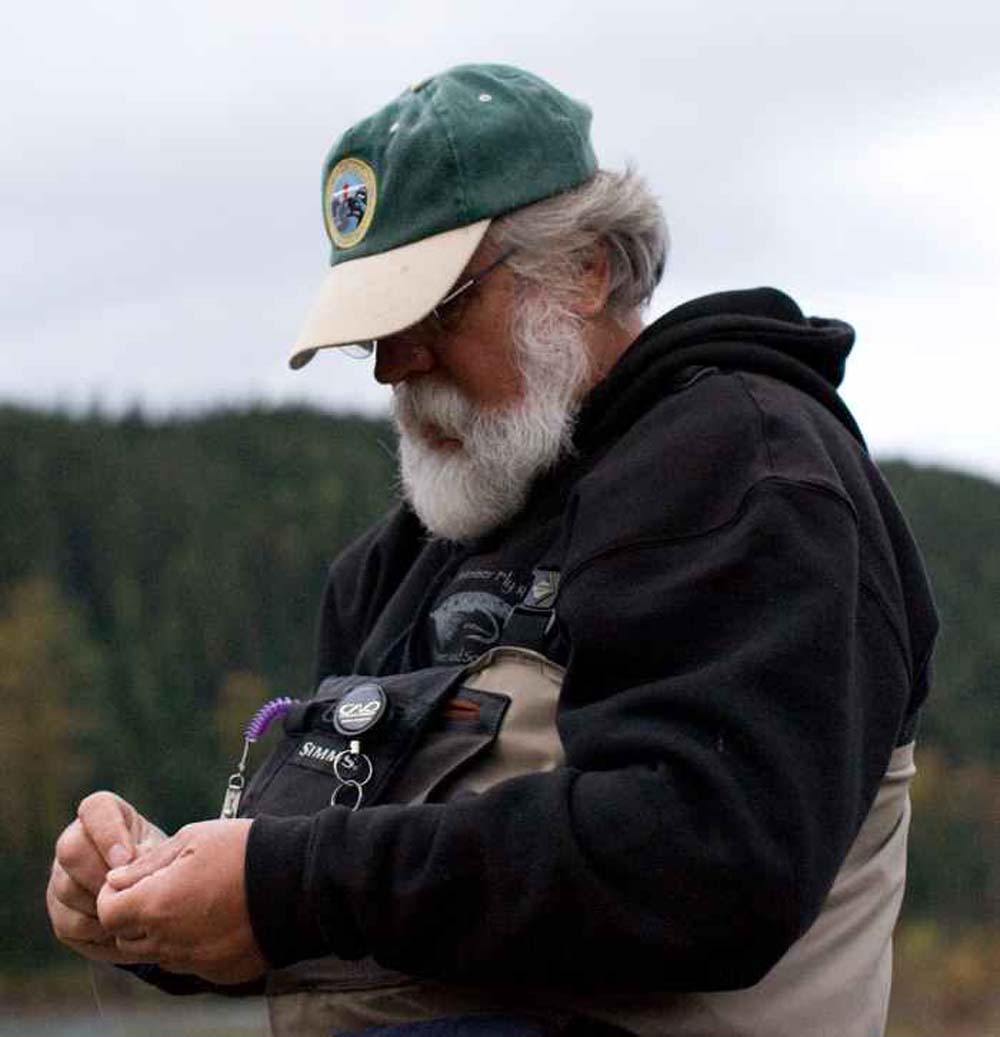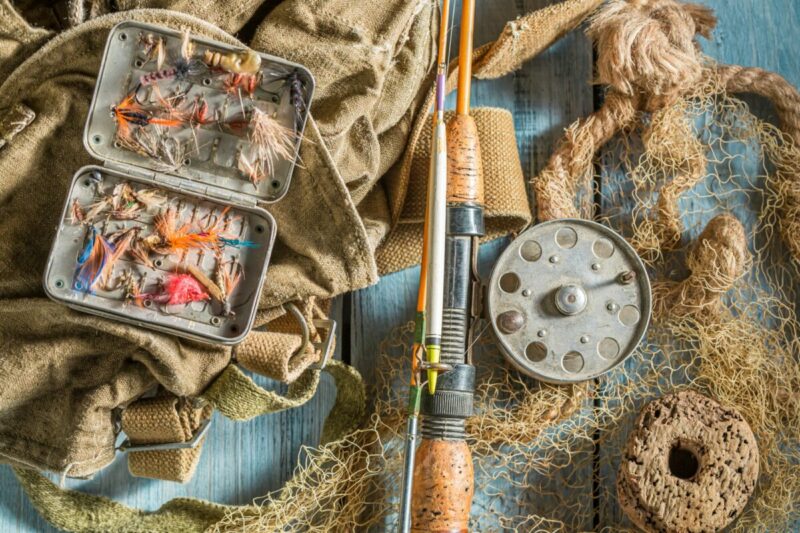
Spey rod casting on the Margaree River, Cape Breton Island, Nova Scotia. Envato photo.
I became a fly casting outlier. It was an ad hoc decision.
Make any of your 9-foot fly rods BOGO for free.
By Skip Clement
All my friends and I learned to fly fish the traditional way, which could be argued as the most challenging way to cast a fly, lure, or bait in any situation ‘fishing’ takes place. That would be, of course, the overhand cast, also called single-hand cast, with accompanying double haul intending to achieve maximum accuracy when casting for trouts, bonefish, salmons, tarpon, or any other species.
But, according to some traditionalists, perfection in fly casting is spey casting.
Why?
Because the two-handed spey cast is royalty, all fly fishing with rod and reel came from its loins and its hundreds or years of service proof enough that it’s the most effective way to cast well, and it’s easier than double hauling.
Fly casting with rod and reel has variations like backhand cast, reach cast, roll cast, Belgian cast, bow & arrow cast, and even a so called ‘unsnagging cast.’ There are also many other titled fly casts like sidearm or backcast that are mere ‘adjustments’ that come to any fly fisher instinctively avoiding obstacles. NOTE: Opinions on named casting types could be an endless one.
Spey Casts: Splash and go and water anchored or haul
There are two groups of spey casts, the ‘splash and go’ and the ‘water haul’ [an anchored cast]. Splash and go casts contain a backstroke that is in the air. The line then falls to the water, and the forward cast starts as soon as the tip of the line touches the water.
The water haul cast is when the fly, leader, and sometimes a portion of the fly line are stuck to the surface of the water [water tension] at the beginning of the forward delivery of the cast.
The spey cast has its genre: double spey, single spey, circle/snap-T spey, snake roll, and a few other variations.

Perfect example: Henry Fly Rods‘ lightweight, ultra-short Dave Redington designed ‘Power Boost’ series [3-through 9-weight] fly rods.
Could you show me the money?
Both casts, conventional and spey, are visually defined by their rod lengths and method of delivering the fly, the 9-foot [+/-] long fly rod, and the spey fly rod at a plus or minus 13-feet long [+/-].
Together, these two configurations make up the most fly rod sales, by far.
Today, the technology that makes one rod different enough from another is not a great leap, but the devil is in the details. For example, one conventional fly rod sells for $1,000, another $600, and another $100.
If the angler only has deep pockets as their skill, they will more than likely choose the $1,000; a well-informed fly fisher would have second thoughts about spending $1,000 for a fly rod to capture panfish and stocked trout; as a matter of fact, it probably won’t happen. However, informed anglers with a lot of air miles spent each year traveling to distant destinations or regularly fishing for animals that eat fish the size of panfish or stocked trout will look at a $1,000 rod or at least a carefully selected $600 fly rod.
As mentioned above, the same rationale applies to an angler choosing a big box store spey rod versus a classic spey rod built by RB Meiser.
What about switch rods?
After RB Meiser introduced switch rods to the American and Canadian salmon and steelheaders of the northwest and Great Lakes Region. The switch market went ‘viral,’ but only for a while.

Bob Meiser is one of North America’s great fly rod designers/builders. Photo credit RB Meiser.
Then, the fly fishing corporate world slowly got advertised the buyers away from switch rods, which is where it unofficially stands today. To be sure, switch rods remain available from the major fly rod companies; however, the rods are on the back page and only in one or two weights, if not just one.
The most complete switch rod choices come out of RB Meiser’s shop
As the US and Canadian switch rod market dried up, Europe took over in a big way; all hands on deck. They spotted a winner, made modest innovations like being preferential to Scandi rigging, and expanded upon switch rods’ benefits, especially the in-your-face advantages: easy to cast any conventionally titled cast, or with any titled spey cast, but with half the effort. The cons remained as one might expect if a spey caster, the switch couldn’t cast as far as a longer spey rod, and with the shorter conventional length rods, 9-feet, the switch took some management skills to be successful in small creeks and streams, or cast comfortably to fish at distances of 30-feet and less.
One of the switch rod’s benefits never capitalized on is an extended butt and lengthened handle paired with conventional fly rod lengths
A year ago, an unsuccessful attempt to marry switch rod design with conventional 9-foot fly rod builds failed [Henry Fly Rod & Reel]. The design idea was to add a short, gripping butt and a lengthened handle to accommodate two-handed casting. Unfortunately, the concept remains unflawed, but undercapitalization and supply chain issues were lethal disruptions to the start-up at the outset of COVID 19 and during it. There was one initial blunder, mismatching fly line with rod weights, which was corrected, but it was game-over and too late.
NOTE: Featured image credit Envato.


